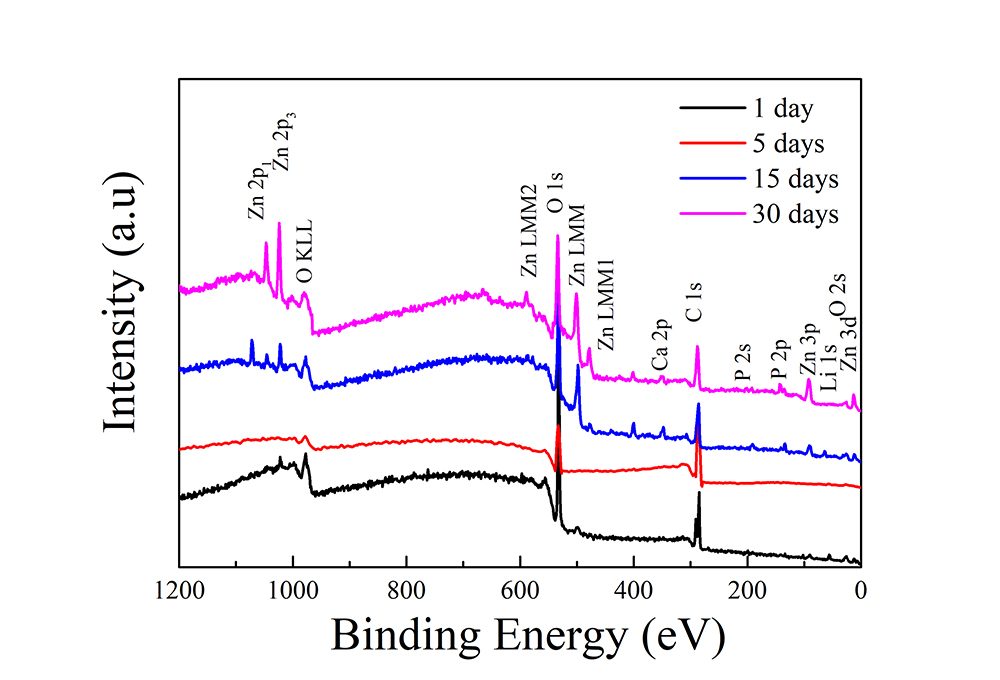
图9(a)显示了不同时间后浸入的合金样品的XPS测量光谱,表明腐蚀产物主要由镁、钙和锂组成,以及低含量的钙和磷。腐蚀层中的锂从第一天的21.5 %持续下降到第30天的0.9 %,同时锌显示出相反的趋势,从第一天的1.2 %上升到第30天的8%(图9(b))。锌2p和锂1s区域的光谱进一步证实了这些趋势(图9(c)和(d)),表明从富锂腐蚀产物向富锌腐蚀产物的转变。锌2p和锂1s区域的光谱进一步证实了这些趋势(图9(c)和(d)),表明从富锂腐蚀产物向富锌腐蚀产物的转变。
The XPS survey spectra of immersed alloy samples after different times are shown in Fig. 9(a), demonstrating that the corrosion products mainly consist of Mg, Ca, and Li, as well as low amounts of Ca and P.Li in the corrosion layer decreases continuously from 21.5 % at day one down to 0.9 % at day 30, meanwhile Zn shows an opposite trend, increasing from 1.2 % at day one up to 8% at day 30 (Fig. 9(b)).These trends are further confirmed by spectra of Zn 2p and Li 1 s regions (Fig. 9(c) and (d)), signifying the transformation from Li-rich corrosion products to Zn-rich corrosion products.These trends are further confirmed by spectra of Zn 2p and Li 1 s regions (Fig. 9(c) and (d)), signifying the transformation from Li-rich corrosion products to Zn-rich corrosion products.